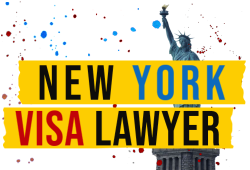Immigration Law Wiki
B1/B2 Visitor Visa
B visa category is reserved for foreign nationals who wish to enter the U.S. temporarily for business (B1) and for pleasure or medical treatment (B2). To determine whether you should apply for B1 or B2, consider the nature of your planned trip. If it is recreational, such as visiting family members, tourism, amusement, or receiving medical treatment, a B2 visa would be more appropriate. If the purpose of your travel is to attend business meetings or scientific conferences, negotiate a contract, settle an estate, etc., you should apply for a B1 visa.
Who is eligible for a B1 or B2 visa?
Under the Immigration and Nationality Act, a visitor visa applicant is presumed to have immigrant intent. To qualify for a visitor visa, an applicant must prove to the consulate officer that s/he is not an intending immigrant, by demonstrating all of the following:
- Their planned stay in the U.S. is temporary;
- They have sufficient funds to cover all expenses;
- They have strong social and economic ties to their foreign residence and do not intend to abandon it;
Document checklist for a B-1 or B-2 visa
To apply for a B visa, you need to make a visa interview appointment with a U.S. embassy or consulate that has jurisdiction over your permanent residence. You may be able to apply for a B visa at a third country, but it is often more difficult.
Generally you will need the following documents:
- Form DS-160, Online Nonimmigrant Visa Application; (Note: The online DS-160 application has replaced the old DS-156, DS-157, DS-158, and DS-3032 forms)
- Visa application and processing fees;
- A valid passport with a validity date at least 6 months beyond your intended stay.
- Passport-style photos;
- An invitation letter from your relative or business partner in the U.S. to demonstrate the purpose of your trip;
- Evidence of sufficient funds to cover the trip and living expenses in the U.S.;
- Form I-134, Affidavit of Support, signed and notarized if a third party, such as your adult son or daughter, will provide financial support for your visit;
- Travel arrangement, such as round-trip tickets, if available;
- Evidence of home ownership (or for other real estate properties) in your home country;
- Monthly bank statements and balance verification letters;
- Evidence of regular income, medical insurance, and other documents that may demonstrate your binding economic ties;
- Proof of other family members not traveling with you (several family photos and vacation photos may help in certain cases);
- Proof of owning a local business, if applicable;
- Copies of your previous visas, approval/denial notices for extension requests, boarding passes, etc., that demonstrate you have not violated immigration regulations on your previous visits;
- If your child is inviting you, his or her immigration status documents, employment verification letter, bank account verification letter, W-2 forms, etc.;
- A cover letter to explain the purpose of your trip and any specific issues;
- Other documents required by specific consulates.
How long can I stay in the U.S.?
A visa, within its validity period, allows you to travel to the port-of-entry (POE) of the United States. At that point a Customs and Border Protection (CBP) officer will either permit or deny your entry to the U.S. after inspection. If allowed, you will be assigned an authorized stay which is indicated on your I-94 card. You must depart the U.S. before your authorized stay expired. Your information will also be entered into the US-VISIT system at the POE. You must turn in your I-94 card to the airline when departing the US.
Can I extend my stay?
Yes. You may file Form I-539 with the USCIS before your authorized stay expires. You are then allowed to remain in the US legally until a decision is made on your I-539 application, or up to 240 days, whichever comes first. If approved, a form I-797, with a new I-94 attached, will be mailed to you showing a new departure date.
Note that USCIS must physically receive your I-539 application on or before the last day of your authorized stay. If you are already late, you must prove that the delay of filing your extension was reasonable and also due to extraordinary circumstances beyond your control.
What if my I-539 extension of stay is denied?
If your application for extension is denied, and your previously approved stay has already expired, you will be considered out of status from the date your original authorized stay expired. You must leave the US as soon as possible to stop accumulating your unlawful stay, and to minimize any potential impacts it may have on your future applications.
Under such condition, any B visa you may have is also considered void. For these reasons we highly recommend you apply for an extension well before your B1 or B2 authorized stay expires. USCIS suggests two months in advance, but no more than six months.
Can I enroll in school while in B1 or B2 status?
No, you must change your status to F or M before you may enroll in any classes. Recreational classes or casual, short courses that are not considered as part of an academic or certification program are generally acceptable.
